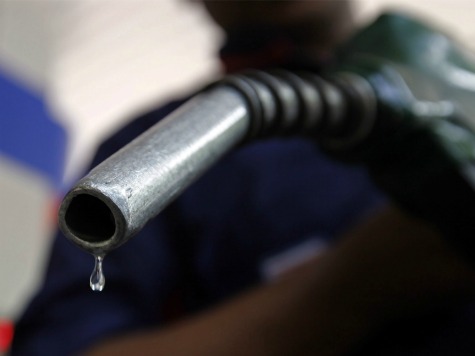Americans have always known that bigger is better, and we’ve long preferred big vehicles to drive around our big country. That’s changed a bit in recent years, with gas prices seemingly stuck in the $3.50 per gallon range. But with prices at the pump coming down, big trucks are coming back.
“Over the last month, auto analysts say, consumers have shown a fresh interest in the kind of SUVs — Hummers, Lincoln Navigators, Ford Explorers — that typified America’s bigger-is-better mindset of twenty years ago,” The Washington Post reports.
That could be good news for American automakers. They’ve traditionally earned their biggest profits from their biggest vehicles. They build smaller, more fuel-efficient cars, as Holman Jenkins writes, in large part simply to meet federal fuel economy standards.
Since July, though, gas has plunged from $3.50 per gallon to, in some places, less than $2.80. And it seems likely to get even less expensive. Because of hydraulic fracking, the United States is producing more oil than it has since 1986. And even more supply may be on the way.
With the midterm elections over, lawmakers in both parties are scrambling to show their support for the long-delayed Keystone XL pipeline, which would deliver low grade Canadian crude oil to refineries on the Gulf coast. Both Sen. Mary Landrieu (D-LA) and her opponent in next month’s runoff election, Rep. Bill Cassidy (R-LA), are backing bills to build the pipeline, which has been delayed for years by foot-dragging in the Obama Administration.
National Journal reports: “The White House has begun hinting that President Obama would veto legislation that mandates approval of the Keystone XL oil-sands pipeline.” But, ironically, CNBC says oil may be too cheap to make the pipeline profitable right now anyway. Such is the power of markets.
In any event, Americans benefit from less expensive oil. The average American has saved $500 just since June because of the price decrease. And lower fuel costs make everything that needs to be shipped cheaper, including people. Airfares could come down if fuel costs remain low.
Cheap fuel should also help American foreign policy. The Economist reports that Iran “needs oil at $136 a barrel to finance its spending plans, most of them inherited from the profligate and inefficient government of Mahmoud Ahmadinejad. Last year it spent $100 billion on consumer subsidies, about 25% of GDP.” With crude prices now below $75 a barrel, there’s no need to hurry into any treaties with Tehran; we can let the country’s government drown in red ink instead.
It’s impossible to predict how low prices will go. But we could see $2.50 gasoline by the end of the year. Merry Christmas to all.

COMMENTS
Please let us know if you're having issues with commenting.